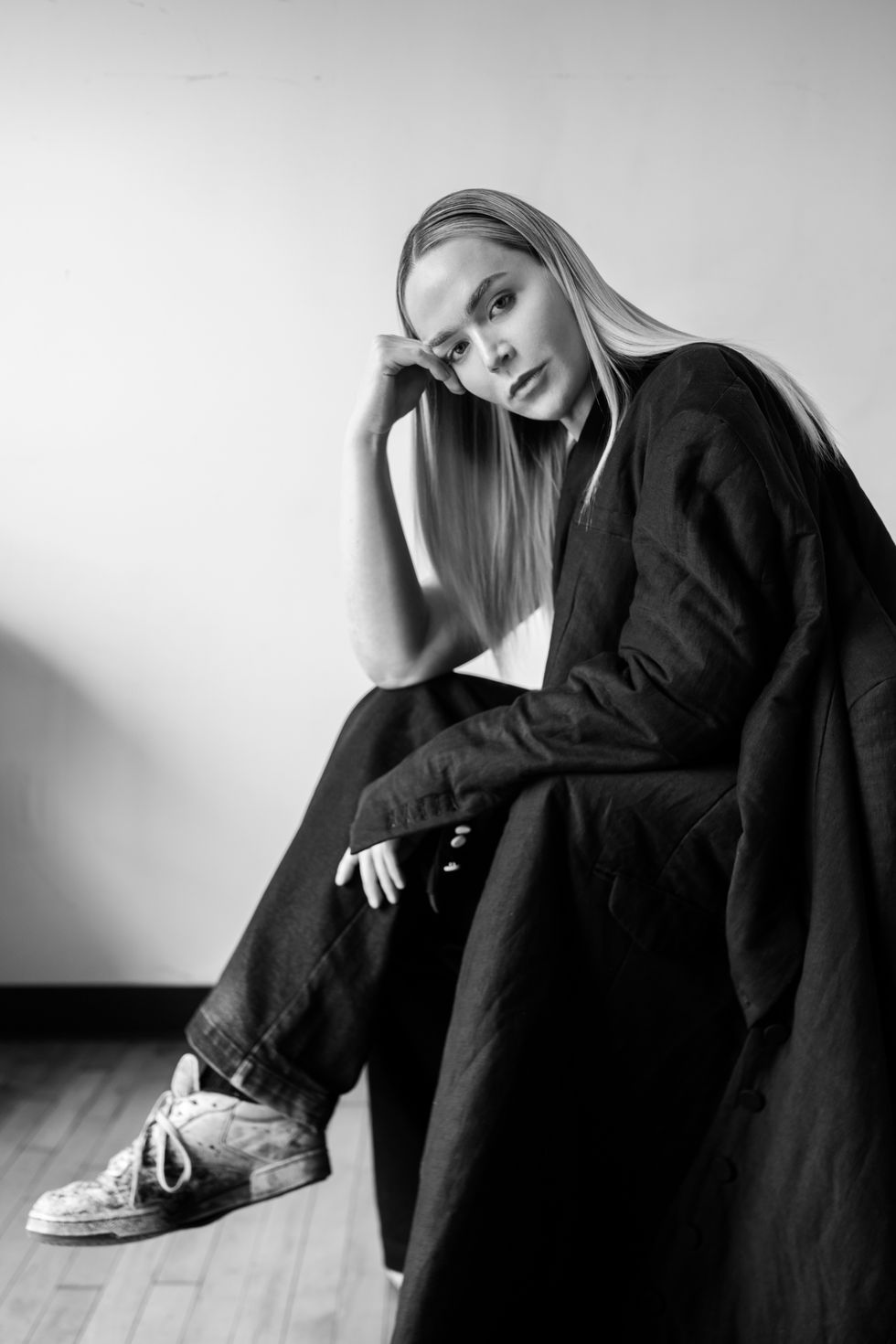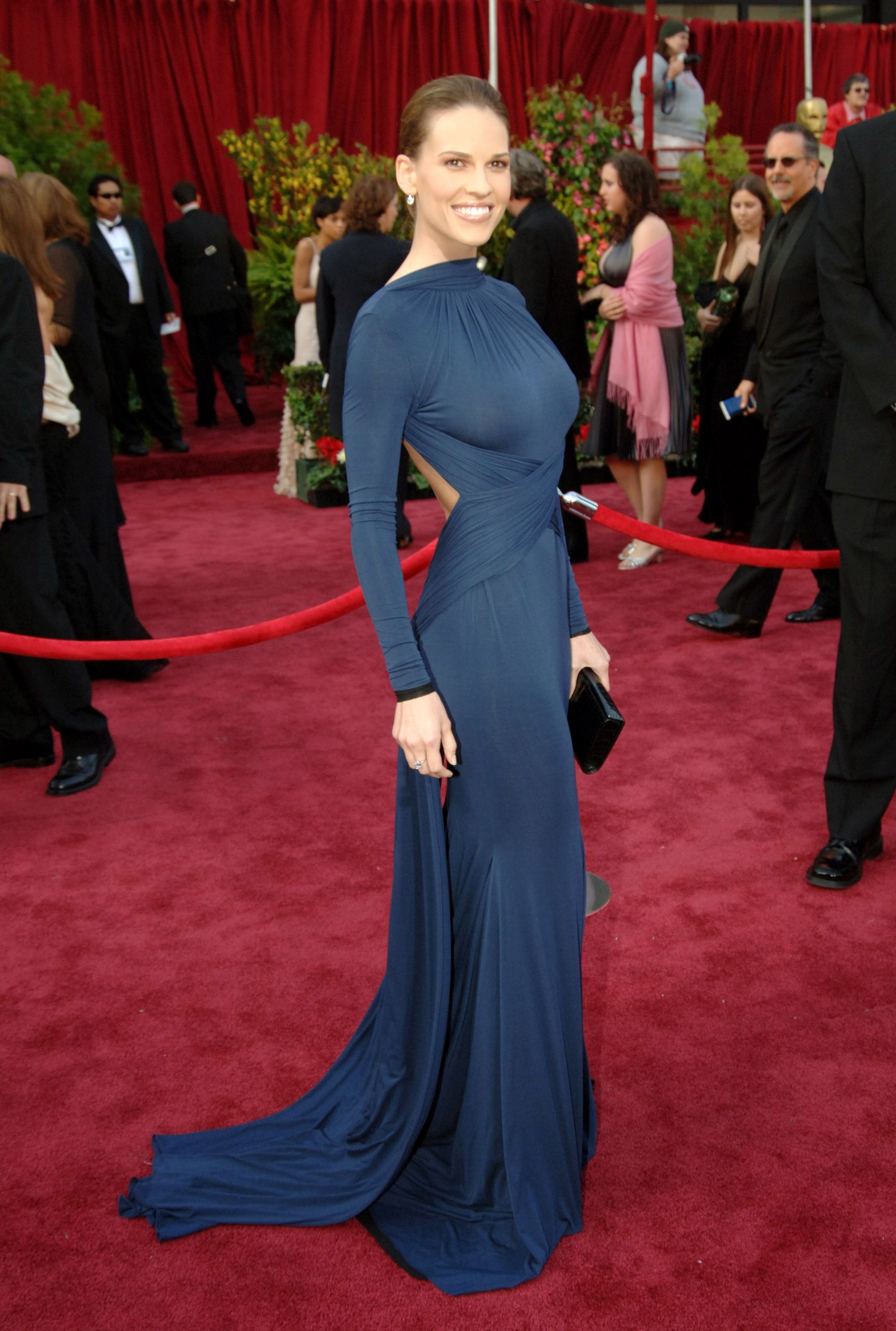
As the Design Director of the American menswear brand Outlier, Willie Norris knows that fantasy doesn’t have to come at the expense of function. Norris doesn’t produce work with a specific audience in mind—she creates work for herself. The designer is uninterested in the color-by-number templates of gender or consumer markets. Instead, it is the ongoing dialogue between herself and the material that molds the story of each garment.
In addition to her role at Outlier, Norris works one-on-one with clients at a consultation-based atelier called Willie Norris Reworkshop. Here, she reconfigures clients' pre-existing garments. At its inception, Reworkshop produced limited-edition series of screen-printed T-shirts. One particular tee sporting the block letters "promote homosexuality" put the brand on the map, but it didn't change Norris' ethos about her work. When it comes to reaching an audience, Norris believes knowledge of oneself and one’s own vision is the key to creating art that speaks to people on a personal level.
Paired with her takeover of Coveteur's Instagram for Trans Day of Visibility, Norris discusses her creative process, the power of language, and how to navigate “visibility” and “pride” in this turbulent political climate.

I think most people would consider “functionality” and “fantasy” to be opposing forces in the world of fashion—how do you work with these concepts in tandem? How do they play with each other in your work?
The concepts of functionality and fantasy are often perceived as opposing in the fashion industry, but I find their interplay to be a source of inspiration. In my opinion, fashion offers a unique opportunity to blend these two forces, resulting in an exciting and meaningful outcome. This is the same reasoning as to why I see creativity, commerce, and cause as collaborators in fashion. These perceived oppositional forces create real 1+1=3 situations.
At Outlier, the menswear brand that I am currently Design Director for, we prioritize image-making and have built a significant image archive over the years that I believe stands strongly as a product of its own. To create a fashion brand that truly resonates, equal emphasis must be placed on the physical product, and its emotional and subconscious connections to the fantastic imagery that inspired it. Any great consumer brand should operate with fantastical function.
Fashion is a great medium for expressing the duality of opposing forces, and that is what makes it a compelling and worthwhile pursuit for me. TL;DR.... fashion is a great place for a Gemini!
The use of language and text is a common theme in your work. How do you determine when an idea is best expressed in text? In terms of language, what writers, poets, and artists do you draw inspiration from? What role does humor play in your work?
To me, language and text are crucial components of the creative process. Words help me express and develop ideas in their earliest and most fully formed stages. Instead of sketching or storyboarding, I write out my concepts in detail to capture every possible detail that comes to mind. Sometimes I even write the product copy I want to see on the website before I start a design.
When it comes to deciding whether an idea is best expressed with the physical use of text, I don't have a conscious protocol. I simply let the words come to me and use them if they demand attention and are sticky enough. If people resonate with the words, it means that the words have succeeded in making themselves known.
Humor is lifeblood; it is a digestif for daily life. You simply must be able to pull from the well of humor and allow yourself to look at a situation through a humorous lens to survive as a sentient being in 2023.
I draw inspiration from a range of writers, poets, and artists. Ursula K. Le Guin is the most significant writer in my life right now, and I'm devoted to understanding her entire oeuvre. I'm also inspired by poets like CAConrad, Kyle Carrero Lopez, Jourdain Barton, and David Robilliard. I enjoy reading food- and cookery-related writing, and have found solace in the works of Tamar Adler, Ruth Reichl, and Elizabeth David. Additionally, Qween Jean's exceptional oratory skills, organizational abilities, and thoughts ignite and inspire me.
Your garments often include many thoughtful details—hidden pockets, cultural references, subtle finishes—what kind of storytelling do these details add? What kind of narrative do you infuse in these choices?
The best garment reveals itself over time. Thoughtful details are a way to keep the wearer invested. The overall narrative in these choices is a true, continued reverence for craft and a desire to make clothes that are consistently enjoyable to wear.
The queer community is unique in that we are unified in our “otherness”—how are themes of community and otherness expressed in your work?
I create my work first and foremost for myself. I cannot emphasize the importance of that enough. I express myself through my work and it resonates with others who see something in it. They might see an approach they relate to or recognize an obsession they share. Knowing myself and recognizing that there are people who relate to who I truly am is the only way I consciously express community and/or otherness in my work.
At the helm of a menswear brand, how is gender subverted and explored through something as mutable as outerwear? Since clothing is so unique to the individual—as self-expression, decoration, self-defense, exploration, or utility—how do you approach menswear with fluidity at its core?
Maybe the simplest way to answer this question would be to say that I’m not interested in having customers, clients, or collaborators who need me to say something is or isn’t for them. That’s part of the joy in the work: watching how people make their own judgment calls.
I hardly ever think of gender when I’m designing. It’s a terribly boring, stifling consideration to keep in mind when you’re creating. With that said, the gender thing is naturally—and understandably—a point of intrigue for people. A transwoman designing mostly menswear... I get it! But it is not that deep or important. I don’t like to think about the role that gender has in my work. People are going to do that for me.
On the topic of #TransDayOfVisibility—visibility is tricky in that it exists to create clarity for other people—how does visibility serve the individual? How can self-identification best empower an individual? How have you navigated the push and pull of constantly redefining your “self” to others? Additionally, regarding the record number of anti-trans bills, what power does visibility hold during a time of such political scrutiny?
Visibility is not in and of itself a positive thing. It must be paired with action or, at the very least, pathways to action and thus progress and growth. An individual must assume as much responsibility as they possibly can in assuring that external uses of their visibility come paired with action and progress.
I’m personally not interested in being visible for the sake of being visible. I am interested in being visible if I feel it might help me live a more comfortable life or if my visibility has the potential to reach a large swath of people who might feel a little more comfortable in their existence by seeing me comfortable in mine.
I don’t think I have had much of a push and pull of redefining myself as it relates to others. I am deeply in tune with who I am as a person. I’m not exactly preoccupied with having a perfectly defined self that is up for public consumption. I know who I am, and people will do with that as they please.
Visibility, whether we like it or not, is only going to be more important and crucial as anti-trans bills manifest across the country and the world. Otherwise, the individuals who are writing them get their way. It must be noted that I believe the displaced human energy and potential that goes into the creation of discriminatory laws is a true tragedy.
As we approach the corporate, rainbow-washing of Pride Month, how can queer artists prioritize their own success when companies are often trying to capitalize on them? With capitalism and art so intertwined in the fashion world, what is your biggest frustration with the business? What is your biggest pet peeve when it comes to “corporate” pride?
Queer artists can prioritize their own success when companies are often trying to capitalize on them by first being radically honest with themselves about the situation they find themselves in. The truth is companies are trying to capitalize on you! That is... what businesses do. We kid ourselves into submission if we start looking at how companies of any kind engage with the month of June through any sort of altruistic lens.
Secondly, queer artists must remember to advocate for themselves and guide their own narrative at every single step. These two things are non-negotiables in my book and are especially important to keep in mind at the very beginning stages of your path. In my honest opinion, budgets should not be allocated for pride campaigns unless the company has decent and moral working conditions throughout the entire company.
My biggest pet peeve about corporate pride is how aesthetically unpleasant the merchandise and graphic design can be. Truly.
What are your favorite artistic rituals? What do you do when you are creatively blocked?
Writing is the only artistic and/or creative ritual I allow myself to have. It has never failed me because I haven’t given it the capacity to. Oftentimes I like to light a candle while I am writing, but that isn’t a necessity.
When I recognize I’m creatively blocked in some way, I make a quick decision to go one of two ways. Do I push through this and see what’s on the other side? Or do I abandon ship, take a hard left, and occupy my mind in another way? When I take the latter route, I typically find myself stretching or cooking. These are two things that, over time, I have found that can quickly and consistently occupy my mind fully and take it somewhere new.
I find that most of the time, a creative block is caused by one of two things. It’s either a wire-crossing of your creativity and analysis, or it is caused by a fixation on a future that isn’t real. “The future hasn’t happened yet” is something I find myself saying a lot to myself that brings me down to Earth when I’m flying high in irrational thoughts.
Do you remember the first garment you fell in love with? Why?
Yes. It was Hilary Swank’s Guy Laroche (By Herve L. Leroux) navy backless gown at the 2005 Oscars. It appeared to me as something that she was born wearing; a garment that was always meant to be seen and worn at the very time it was. Seeing it made me feel alive and the dress and memory continue to inspire me today.


Do you think all art should be confrontational?
I don’t think artworks need to be confrontational or exist to confront something in their outward nature and worldly existence. However, when I look at what I deem to be “good” art, I see and feel proof that confrontation occurred within the artwork’s creation itself. The proof is the art.
In the past few years, my perspective on this word has changed a lot. Where I used to get a feeling of emotional self-flagellation when the word “confrontation” came up, I now recognize it as one of the most crucial things needed to move forward with your life in the way you want.
WILLIE NORRIS FOR OUTLIER
IDEA 5—"PROOF"
Fall 2023





























What more stories like this?
Is Monogamy So Out It's Kinky?
At Home With Footwear Designer Emme Parsons
Italy's Best Kept Secret: A Guide to Taormina
0 Comments